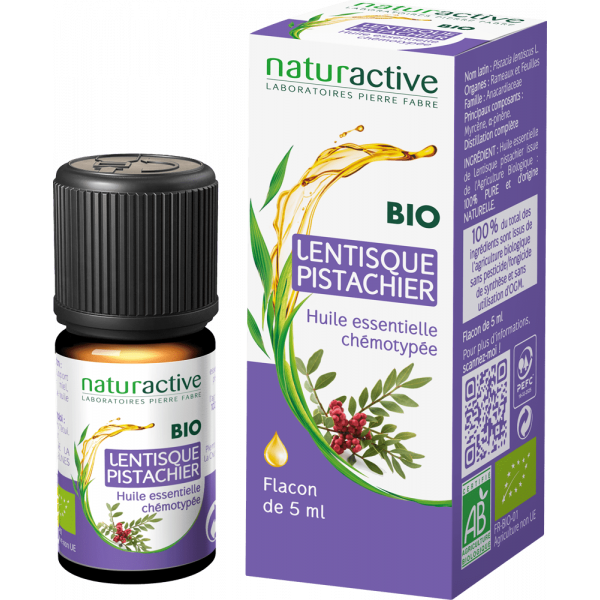Ingredients
Pistacia lentiscus Essential oils HEBBD (Botanically and Biochemically Defined Essential Oils) It is quite simply essential in all blood circulation problems.
Description
Family: Anacardiaceae Origin: Morocco Producing organ: twig + leaf Type of odor: intense, "like turpentine"
Possible uses:
To apply on the skin: Yes ++++ (pure on a small surface, diluted in vegetable oil in case of repeated applications, on a large surface or if the skin is sensitive.) To swallow: Yes + A breathe: Yes ++
Major properties:
Venous, lymphatic, prostatic decongestant and also antispasmodic stimulating, regenerating mental action.
Major indications:
Heavy legs and circulatory disorders (minor or significant - varicose veins) Congestion of all types (uterus, prostate - see below, etc.) Hemorrhoids Prostate problems (frequent urge to urinate with the impression of never completely “emptying” yourself - special seniors)
Usage tips
Legs, varicose veins: Apply 5 drops of lentiscus mixed with 50 drops of calophyllous vegetable oil, and apply to the affected area. Renew the application morning and evening.
Hemorrhoids: Apply 2 pure drops to the hemorrhoidal vein after each toilet and each bowel movement.
Prostate: Apply in massage on the lower abdomen and the lower back, after dilution in vegetable oil of calophylle (at 50/50: 5 drops of lentiscus / 5 drops of calophylle) + Swallow 1 drop on a small sugar or honey and let melt in the mouth 3 times a day.
Spasmodic digestive pain (colitis, aerophagia, ulcer): Apply 3 drops mixed with 30 drops of vegetable oil (calophyllum if possible), massaged on the abdomen. Renew the application morning and evening.
Other use
Think of it if you suffer from sinusitis: 3 drops mixed with 30 drops of vegetable oil massaged around the temples and on the forehead (next to the affected sinuses), it decongests and soothes.
Contraindication
Like all essential oils, that of pistachio mastic is prohibited during the first 3 months of pregnancy. It should also not be used during breastfeeding.




